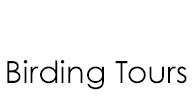March 16, 2024 to March 21, 2024 with Jesse Fagan

Want more info? Visit our Bahamas birding tour page.
A great tour to the Bahamas this year. We saw all our target birds and enjoyed pleasant weather throughout. Thanks to my group, I enjoyed your company in the field. Let’s do it again soon!
We started the tour on Abaco Island. We shot out of the gates quicker than normal since our flight schedule this year left us with limited time here. Abaco is an important island for endemics and other near-endemics, and we wanted to make sure we had enough birding time. I picked up folks from the airport and that same afternoon we visited a couple of sites on the southern end of the island including Bahama Palm Shores. We were getting out the vehicle when our first Cuban Parrots flew by, quickly followed by West Indian Woodpecker, Greater Antillean Bullfinch, and Bananaquit. This was an excellent start, especially catching up with so quickly the parrot and woodpecker. The next morning, we explored further south to Abaco Island National Park passing by the heavy destruction caused by Hurricane Dorian in 2019. However, the southern pine forest was spared the brunt of the hurricane’s path. It was here we saw our first endemics including Bahama Swallow, Bahama Yellowthroat, and Bahama Warbler, plus regional endemics like, Crescent-eyed (Cuban) Pewee, Cuban Emerald, and Olive-capped Warbler. This day we also enjoyed a lunch at Pete’s Pub which included freshly caught tuna burgers, and an evening dinner with cracked conch in Marsh Harbour.
Our next island was Eleuthera with a layover in Nassau, New Providence. Our first morning we hit the ground running with a stop to look for wintering Kirtland’s Warbler. We met with immediate success when within a few feet of our parked vehicle we heard the distinctive “chip” of this species. An adult male eventually showed very well for us and the cameras! Also, at this stop we found our first La Sagra’s Flycatcher, Bahama Mockingbird, Mangrove Cuckoo, and the impressive Great Lizard-Cuckoo (watch for a potential split here). What a morning of birding! Stops around Governor’s Harbour produced an adult Lesser Black-backed Gull (possibly the same individual from last year) and Osprey young at a nest on a cell-phone tower! A visit to the Leon Levy Preserve was also worth it, especially to see the male Bahama Woodstar visiting the hummingbird feeders. We had two nights on Eleuthera before island hopping (again with a layover in Nassau) over to Andros.

There are several Bahamian endemics on Andros, but this is the only island where you can see Bahama Oriole. We tried near our lodge where I have seen them in the past with no luck, so the pressure was on us to find them somewhere else. Thankfully, we didn’t have to wait too long. We spotted a pair crossing the road as we were driving along and quickly made a Navy Seal type exit from the van (“go go go!”). We were able to watch several immatures foraging together, almost certainly part of the same family group. Later in the afternoon we made a visit to Captain Bill’s Blue Hole part of the Blue Hole National Park on Andros. For many this was their first experience at a blue hole. We picked up at least one new bird here: Red-legged Thrush. However, the quiet space, blue skies, tall pines, and awesome natural formation made this a memorable part of the trip.
Thanks again for traveling with Field Guides. I hope to see you soon on another trip. All the best in 2024 and beyond,
Jesse Fagan (aka Motmot) from Lima, Peru
Additional Critter List:
1) Keys Bark Scorpion (Centruroides guanensis) = We black lighted one after dinner on Eleuthera.
2) Bahamian Racer (Cubophis vudii) = Seen at the Leon Levy Preserve on Eleuthera. This species is endemic to the islands in the Bahamas.
3) Brown Anole (Anolis sagrei) = Good numbers in the coppice at Leon Levy Preserve on Eleuthera. This species is native to Cuba and the Bahamas but introduced to many parts of the southern USA.
4) Auber’s Ameiva (Pholidoscelis auberi) = This species is native to Cuba and the Bahamas. Seen and photographed at the Leon Levy Preserve.
5) Cat Island Slider (Trachemys terrapen) = Several were in the artificial water feature at the Leon Levy Preserve on Eleuthera.
6) Checkered Puffer (Sphoeroides testudineus) = The puffer fish we saw in the mangrove shallows near our lodge on Andros.
7) Slippery Dick (Halichoeres bivittatus) = One of the other fishes seen in the mangrove shallows on Andros.
You can see my complete trip report on eBird at this link: https://ebird.org/tripreport/251214
You can download a combined PDF of this page and the eBird report at this link: https://fieldguides.com/triplists/bah24TRIPLIST.pdf

